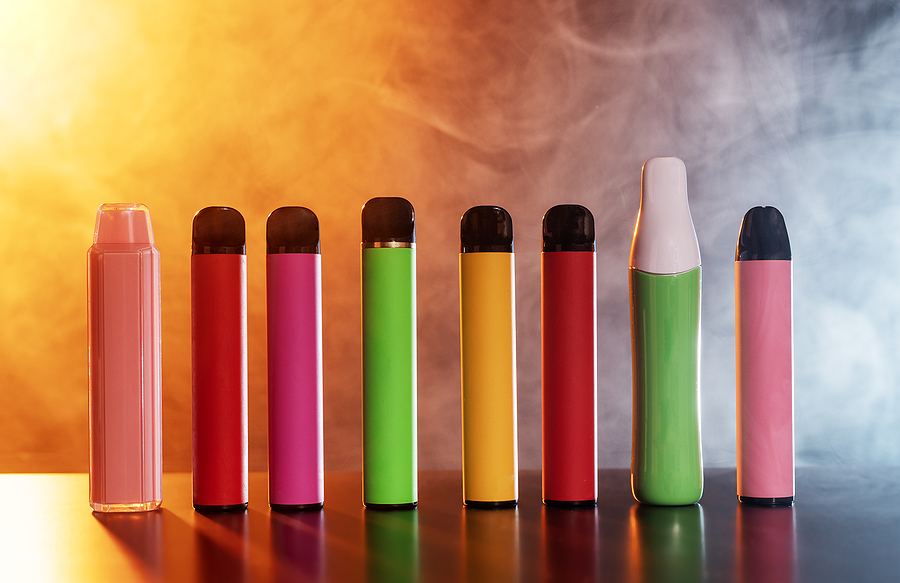Priorities for the new Trump administration will soon begin to take shape. If his campaign is any indication, promoting tobacco harm reduction through vaping and tackling the use of illicit vapes by American youth — an issue touching on children’s health and well-being, secure borders and national security — should be priority issues over the next four years.
The Centers for Disease Control and Prevention recently released the results of its 2024 National Youth Tobacco Survey. These results demonstrate an incredible victory for public health!
The data show that only 1.4 percent of middle and high school students in the United States have smoked a cigarette in the last 30 days. This is the lowest level of youth smoking recorded in the previous 25 years. Dierdre Lawrence Kittner, the director of CDC’s Office of Smoking and Health, called this “an extraordinary milestone for public health.”
The numbers are impressive. In 2002, 9.8 percent of middle school students and 22.5 percent of high school students had smoked in the last 30 days. In one generation, smoking is now a thing of the past for young people — a result that was unimaginable in 2002. By 2011, the combined number for past 30-day smoking for middle and high school students was 18.1 percent. The goal set by the CDC was to get that number to 16 percent by 2020. When the CDC revised that target for 2030, the number was 3.4 percent, but by 2023, the actual rate was less than half of that target.
That is not the end of the good news. Tobacco use by adolescents/youth in every category has beaten the CDC’s 2030 target. Only 8.1 percent of middle and high school students used tobacco products in the previous 30 days (the 2030 goal is 11.3 percent). Most stunningly, only 5.9 percent used an e-cigarette, beating the CDC’s 2030 goal of 10.5 percent. This is a dramatic drop in four years from 2019, when 27.5 percent of high schoolers and 10.5 percent of middle schoolers reported past 30-day e-cigarette use. We can safely say we have made significant progress combatting the youth e-cigarette “epidemic.”
However, the picture is not entirely bright. The current state of youth e-cigarette use has happened despite FDA regulation, not because of it. Despite a complex regulatory system, most of the U.S. market remains entirely unregulated. These illicit products, mostly imported from China, are produced with no disclosure of ingredients or oversight of marketing and manufacturing practices.
We are seeing increasing numbers of products designed to be concealed (identical to a highlighter), in flavors clearly marketed to youth, and now accompanied by video games or apps that gamify and encourage vaping. This illicit market not only imposes a threat to youth but also denies adult smokers looking to switch to substantially less harmful alternatives comfort that they are subject to government oversight.
Unfortunately, we have a broken regulatory process that results in too few product authorizations by the FDA to meet the demand and interests of adult smokers, particularly those who can’t or won’t quit smoking. Fixing that now, especially given the progress on youth use, is critical. The FDA has an incredible opportunity to turn the focus of public health to the 30 million Americans who still smoke.
According to the CDC, smoking is still related to 480,000 premature deaths yearly in the United States. That is 1,315 deaths a day and 55 deaths every hour. These numbers are so large that the danger becomes abstract. These deaths represent real people, as those who know and love smokers know all too well.
These deaths are preventable, and we have tools to reduce the number. I applaud the efforts of public health authorities to invest resources to help people quit. It is an essential component of any plan to reduce the effects of smoking.
Unfortunately, these therapies are not very effective. We know something that works far better — the e-cigarette. The highly respected Cochrane Review has concluded that “there is high-certainty evidence that (e-cigarettes) with nicotine increase quit rates compared to” traditional nicotine replacement therapies like gums and patches.
Multiple studies are showing the presence of these products in the consumer market inspires some smokers to switch, even if they had no intention of doing so before using e-cigarettes. For example, in New Zealand and the United Kingdom, public health authorities have leaned into the health benefits of switching and have shown promising results in reducing adult smoking.
This is an opportunity for the FDA to begin creating a regulatory system and an efficiently regulated market of scientifically reviewed products accompanied by science-based communications to adults regarding relative risk.
This approach will require the FDA to do two things: (1) Fix its broken product pathways and authorize a far more robust set of products for legal sale, and (2) clear the market of illegal products that pose a substantial threat to the gains we have made.
The FDA can work with responsible manufacturers to help shape a responsible market in real-time using its powers of post-market surveillance and enforcement to ensure they are sold and marketed only to adults. Let’s have the courage to try something that works to reduce the death and disease caused by smoking and, in the process, protect the wins we’ve achieved in reducing youth use. We have little to lose and so much to gain.


